What does arctotis look like and how to grow it?
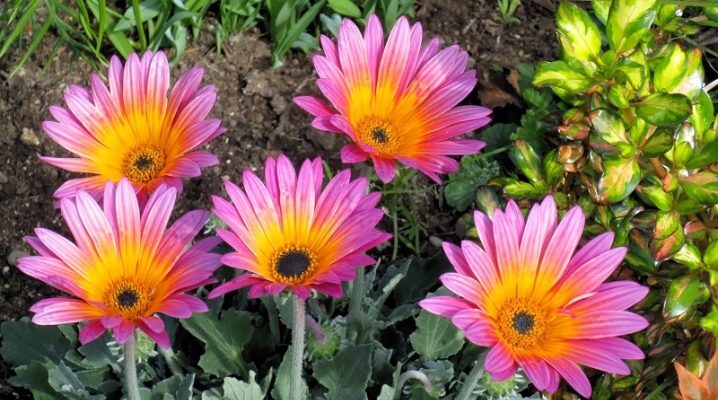
Due to the special attractiveness and beautiful color of the inflorescences, Arctotis has gained high popularity among beginners and professional gardeners. This flower can be found in many gardens, on window sills in apartments. The plant is easy to care for.
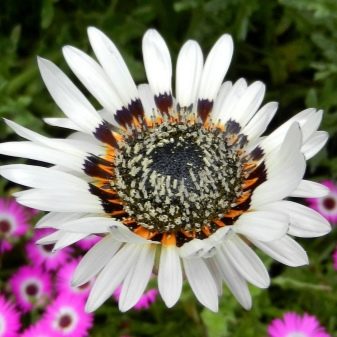
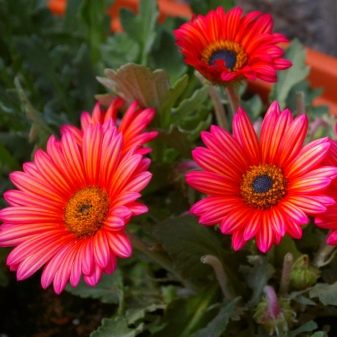
general description
Arctotis is a popular ornamental plant of the Astrov family. The name comes from the Latin word arctotis, which translates as "bear's ear". The family includes more than 70 different species and 65 bred varieties. Such garden flowers are distinguished by strong, pubescent stems, silvery or white. It usually blooms with alternate or opposite leaves. Peduncles are often long, with single baskets. The size of the inflorescences is 7-9 cm.
The flowers of the plant are quite popular with gardeners due to their striking appearance. Most varieties have pinkish, purple, white, purple and brown hues, which are distinguished by a small tuft and gray buds. The leaves of the flower are quite strong and feathery. The plate is characterized by a slight elongation and a dissected structure, pubescent on both sides. The plant is distinguished by a pronounced love of direct sunlight.
Most varieties cover their own inflorescences at night. The flowers themselves are always pollinated by insects.
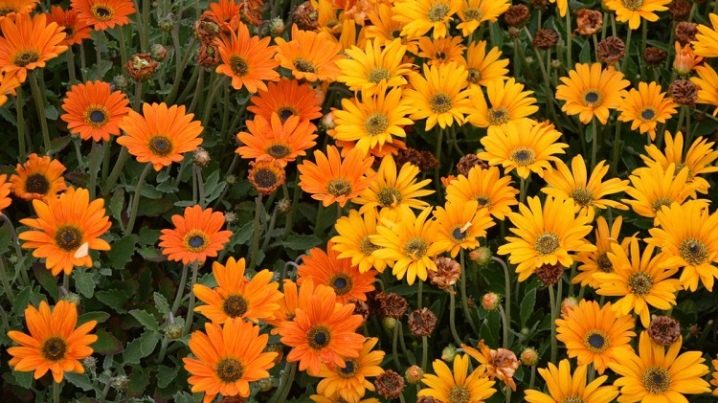
Views
The Astrov family includes a large number of species, among which the arctotis occupies a special place. The plant is characterized by a wide variety of artificially bred varietal forms, sporting rich color schemes.
The most popular varieties:
- hybrid;
- stochasolic;
- acaulescent;
- rough;
- short-stemmed.
In addition to the varieties described above, the Harlequin, a special type of plant that is a mixture of hybrid varieties of various colors, has recently gained wide popularity.
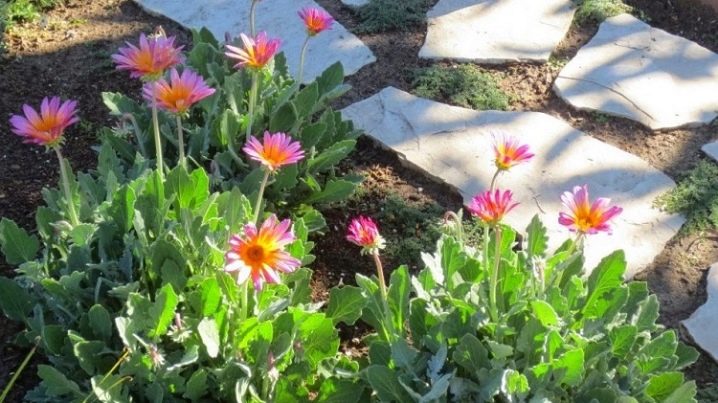
Short-stemmed
One of the most popular varieties, the height of which reaches 15 cm. The native land of the species is South Africa, which is why it tolerates heat well and is immune to direct sunlight. A distinctive feature of the short-stemmed type is a felt covering on the main stem and foliage. The marginal flowers are characterized by a ligulate shape and a bright orange tint. In most cases, the inflorescences germinate singly.

Rough
A perennial species can reach up to 1 m, however, when grown at home or in a garden, the maximum possible height is from 50 to 60 cm. This variety is characterized by increased demand for care. Dislikes direct sunlight and constant shadows.
Flowering is distinguished by a beautiful color of yellow, purple, white and bluish shades. A large number of varieties with unique and interesting colors have been bred from the rough variety. The diameter of the inflorescence usually does not exceed 5 cm.
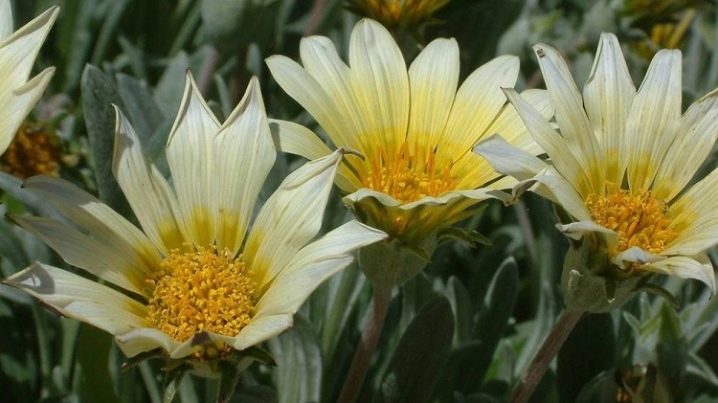
Large-flowered
Due to its unique and varied flowering, it is also called a lush variety. It differs in dimensional inflorescences and decaying stems, which is why it requires a constant garter.
In most cases, the flower of the plant is yellow with an expressionless orange tint. The large-flowered variety is actively used for breeding new species. The diameter of the inflorescences is from 10 to 15 cm.
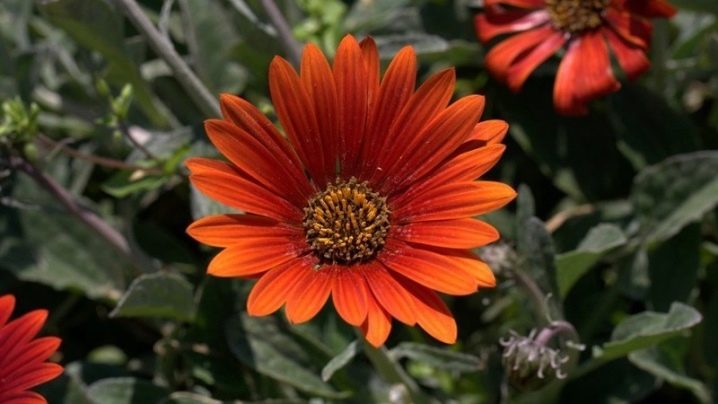
Stechasoliferous
One of the most popular and frequently grown varieties, which can reach a height of 1-1.5 m at home. Unlike similar forms, it is characterized by a longer flowering period.
The features of the variety are also: enlarged leaf plates with slightly pointed edges, a large stem, a developed root system and single inflorescences of purple, white and brown shades. Flower baskets can close in cloudy weather.
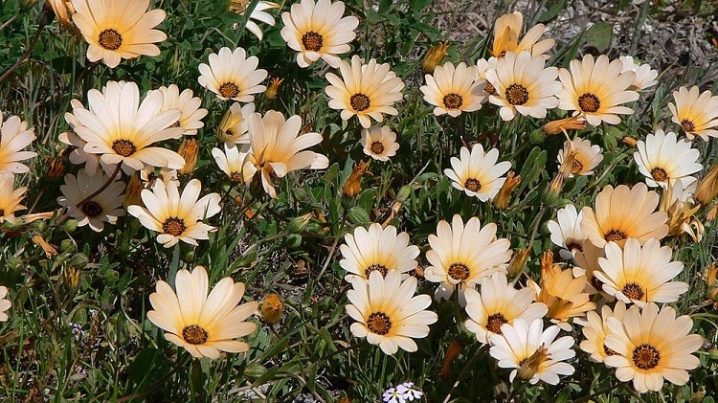
Acaulescent
The variety got its own name due to the too short stem part - no more than 20 cm in height. Flowering is distinguished by red, black and burgundy shades. Inflorescences reach no more than 5 cm in diameter.
The leaves are characterized by an elegant appearance and high splendor. A distinctive feature is the bluish color of the foliage, which makes it possible to use this culture in various design styles.

Hybrid
Due to the presence in the family of a wide variety of beautiful shades and color palette, the variety is especially popular in garden art. The varieties bred from the hybrid form differ not only in shape, but also in height and type of flowering. The average plant size is 20 cm. Some hybrid varieties can reach from 70 to 120 cm, which allows them to be used in the design of facade areas. The diameter of the inflorescence varies from 10 to 15 cm. The leaves are semicircular, with a pronounced outline.
An equally important feature of the hybrid variety is the ability to bloom at any time of the year. Depending on climatic conditions, type of soil and many other nuances, one or another type is selected. Most often used when decorating bouquets.

Landing
Arctotis is a thermophilic plant that cannot survive even with light night frosts. Due to this feature, the flower must be planted in open ground strictly at the end of May - by this period the soil should warm up. In cold regions, the plant is planted in early June. Before planting arctotis, it is necessary to prepare the planting holes. Their depth should not exceed the size of an earthen coma, otherwise the plant will not be able to develop a root system and will quickly wither. You should also adhere to a certain distance between the holes - in the region of 30-45 cm.
Immediately before planting the plant, the hole must be slightly moistened. It is necessary to install a young seedling carefully, along with a lump of earth. The free space is usually covered with earth and compacted a little. In the future, the landing site is watered abundantly. Since arctotis love direct sunlight and warmth, they must be grown strictly in open areas, where there are no hills or dense vegetation. The soil in the selected area is pre-dug up and fertilized with lime. Drainage is also carried out. Clay and too moist soil should be avoided.
Growing from seeds is done in early spring. The planting hole holds from 3 to 5 grains. It is also necessary to adhere to a certain distance between the holes - 40-50 cm for tall varieties and 20-25 cm for undersized ones. The seedlings are additionally crushed with fine-grained sand or earth. To care for the seeds, weeding from excess vegetation and timely moisture are used.
If necessary, loosening of the soil is carried out and additional protection against various diseases or pests. Initial shoots appear 10-15 days after planting.
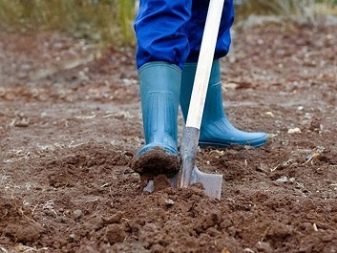

Care
Arctotis is a popular plant with simple care rules that even a novice gardener can handle. The procedures are standard: loosening, watering, pruning, fertilizing and weeding. Experts recommend timely prophylaxis against pests and various diseases.
- The first thing to remember when caring for a plant is to avoid heavy and frequent watering. Otherwise, the root system of the flower will quickly rot and eventually die. When watering, you need to try so that the liquid does not get on the flowers and leaves. Usually this procedure is performed in the morning.
- As necessary, the area in the flowerbed should be loosened and cleaned of weeds. If a tall variety is being grown, a small support is installed to avoid decay of the main foliage. The support can be made from rope and a wooden stake.
- The plant is fertilized exclusively with mineral compounds for flowering crops. Use of organic fertilizers is contraindicated. Otherwise, the root system will quickly die. To stimulate growth, small bushes are pinched from time to time. The soil around the plant is loose.
- Flowering of the African culture usually begins 2-3 months after planting. In winter, the plant is grown in a small indoor pot. Due to the fragile roots, the transplant must be carried out with extreme caution. Growing a house is no different from a flower bed: minimal watering and a lot of light.
- In order for flowering to last much longer, recently faded baskets should be cut off in time. This recommendation will also redirect most of the nutrients and minerals to the root system, creating a strong and resilient stem.
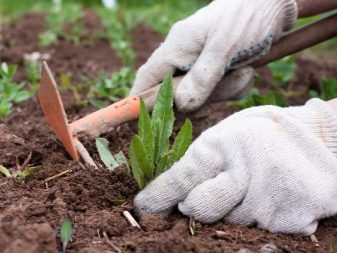
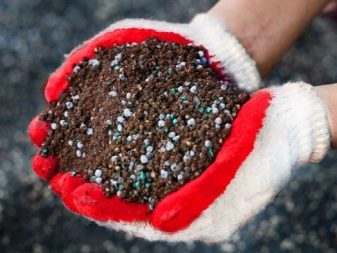
Reproduction methods
Since annual flower varieties are most often used in gardening, reproduction must be carried out using a generative method. Crop seeds can be planted immediately after ripening or after 2-3 months. Seed material does not lose germination for 3 years. It is especially important to add a small amount of perlite or river sand to the planting soil. These chemical compounds will make the soil more breathable. Seeds are usually sown in small pots, trays or specialized seedling trays. Ordinary wooden crates can also be used.
For reproduction, experts recommend making a mixture of black soil, perlite and sand, which are added in equal amounts to peat. You can also use a summer cottage mixture, which must first be calcined in an oven to eliminate various eggs of insects, larvae and pests. Particular attention should be paid to the acidity of the soil substrate. Growing a plant in acidic soil is impossible, while some varieties are able to germinate in calcareous soil. Seeds are planted to a depth of 1-2 cm in the case of closed ground and 2-3 cm for open ground. For sowing, a slightly moistened soil is used.
Seedlings usually appear after 1-3 weeks, depending on environmental conditions.

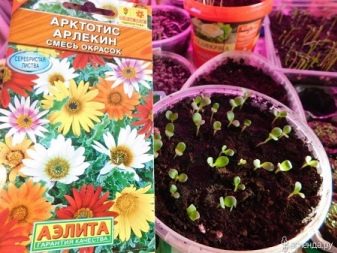
Diseases and pests
Despite the fact that, in general, the plant is quite resistant to various diseases and pests, it is often infected by the meadow bug, common aphid and rootworm nematode. To get rid of harmful organisms, you can use an effective folk remedy. To do this, mix 100 g of mustard and 10 g of onion husks with 10 liters of water. Further, the resulting substance is infused for 3-4 days. If this drug does not have any effect, an insecticide is purchased at a specialized store.
The most common disease is rot, localized in the root system of the plant. To avoid this, it is necessary to frequently loosen the soil and refuse intensive watering. Too wet soil can also lead to the formation of necrosis, bacterial and viral diseases. Lack of proper care leads to rapid wilting, deformation and bloom on the flowers. Often there are so-called pustules - fungal accumulations of a viral nature.
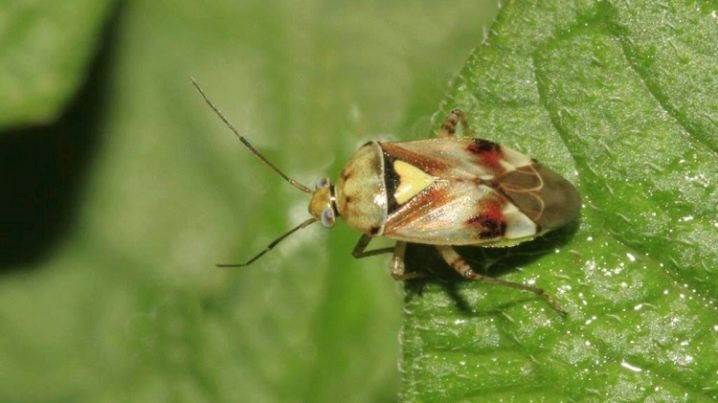







































































































The comment was sent successfully.